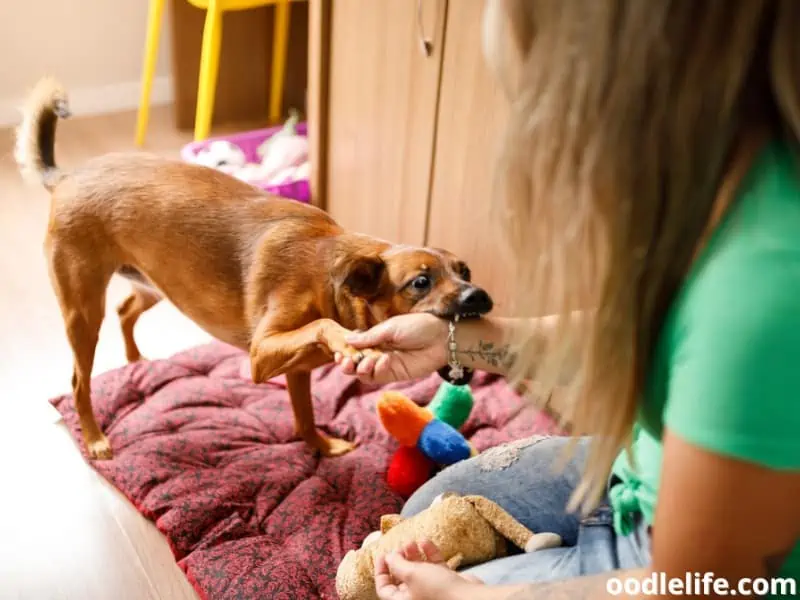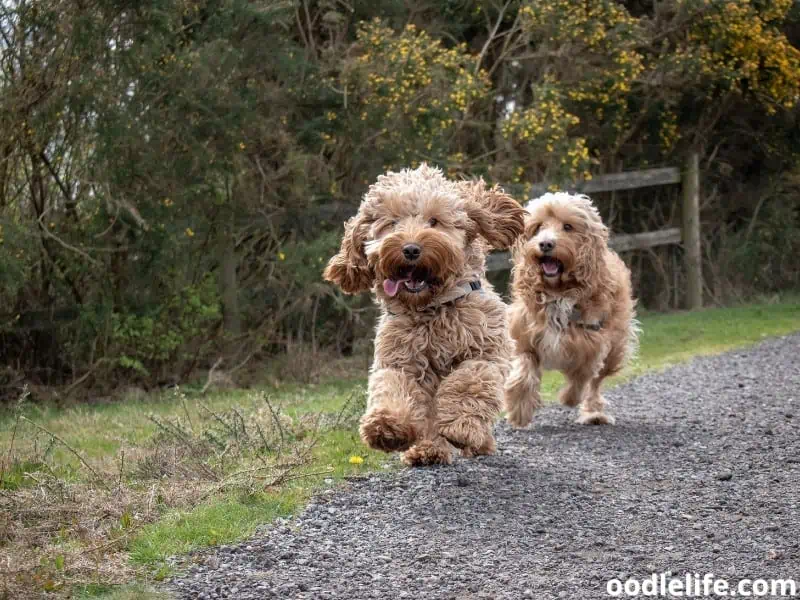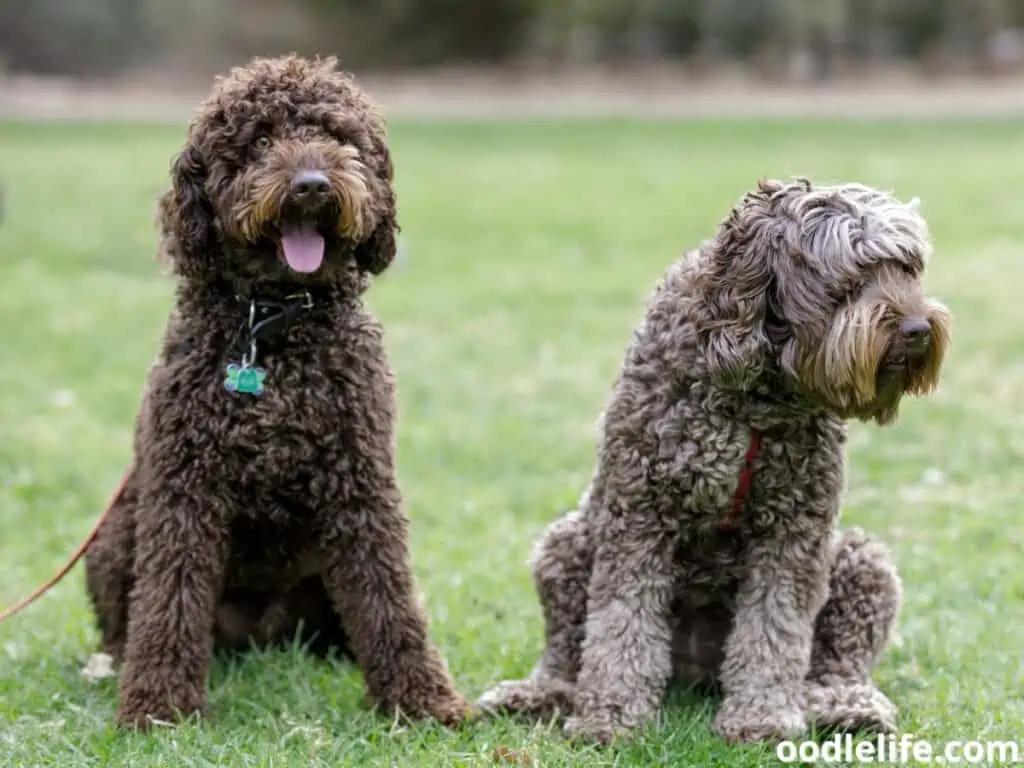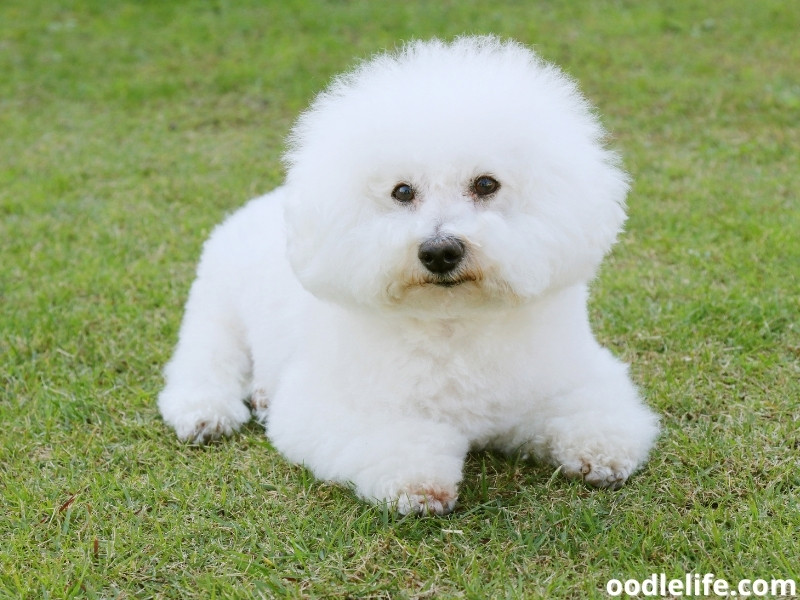The 9 Safest Breeds of Dogs That Don’t Bite
People want to remain safe whenever they adopt a dog and add it to the family. They don’t want that dog biting at guests or acting aggressively towards the kids, so how do you identify dogs that don’t bite? After all, you want the best option for your family.
You have plenty of dog breeds available, but finding the best breed for your home can pose some challenges. However, looking into the safest breeds can minimize risks and protect your dog and family from injuries.

All Dog Breeds Can Bite
About half of children get bitten by a dog before they turn 12. With so many dogs in the country, any dog breed could bite someone. If you own one, you risk your dog biting people, so you must prepare accordingly.

Ensure you train your dog to listen to you, so you can call them if they start to act aggressively. Also, make sure you teach your kids to behave around the dog.
You should always watch your children if they interact with the dog, especially if they’re very young. As you keep an eye on your dog and children, you can reduce the risks of bites. However, each dog has a different personality, so get a feel for the dog before you adopt one.
The 9 Safest Dog Breeds
Even though every dog can bite and be aggressive, you can still look into the safest dog breeds. These options produce dogs with personality traits that make them less likely to bite.
These breeds aren’t in a particular order, so pick whichever works best for your family.
1. Pugs
Pugs stick out as one of the most well-behaved small dogs available. They love to spend time with people and focus on their owners. Not only will they stick with their owners, but they like to listen and do whatever they can to make their owners happy.

Pugs may bark at people they don’t recognize, though many quickly form relationships with strangers. Even if they don’t like someone, they usually won’t bite and instead will just bark at the person.
Pugs also like to relax after playtime, so they’ll mellow out for most of the day. They’ll usually wait for you to get back home, though they may form separation anxiety depending on their personality.
2. Cockapoos
Cocker Spaniels and Poodle mixes are known as Cockapoos. These dogs stick out for their loyalty and friendly personalities. They also like to protect their families, so they aren’t known for running away.

They usually react well to people who aren’t threatening. Cockapoos also develop good listening habits because of their loyal and protective natures. They want to do the best they can for their families, so they’ll pick up training cues quickly.
You still have to watch Cockapoos, but they’ll usually turn to you for direction. They can get hyper and energetic but like keeping their families in sight. Cockapoos also do well with kids and other pets.
3. Shih Tzus
If you want a more exotic dog, you can get yourself a Shih Tzu. These dogs require tons of maintenance and pampering to keep their fur in good condition, but they also have good temperaments and don’t like to harm people.

Many people use Shih Tzus as show dogs because of their beautiful looks and excellent personalities. They know how to behave well and listen to their owners, especially when the owners offer incentives and consistent training.
Like any breed, Shih Tzus can get into trouble without the proper training, but as you work with them, you’ll get a very obedient dog. So make sure you work with your Shih Tzu at a young age to develop those good habits and ensure they become dogs that don’t bite people.
4. Labradoodles
If you don’t want to go with a small dog, you can adopt a Labradoodle. Labradoodles are a mix between Labradors and Poodles. They stick out as quickly trained dogs, so you won’t have trouble teaching them to behave around people and not injure others.

You can even train them to bark to alert you of any threat. Of course, you’ll have to focus on training to make it effective, but Labradoodles perform well with most training techniques, and this breed is often used as service dogs. They learn quickly due to their intelligent nature.
They may get into trouble since they’ll try and outsmart you, but they never do so out of malicious intent. Instead, focus on establishing yourself as the family leader since Labradoodles perform well with hierarchies and respect family members.
5. Golden Retriever
Golden Retrievers remain common household pets because of their intelligence, loyal natures, and kind hearts. They love their families and want to spend time with them, so they’ll perform well as a larger dog in a house.

Some people worry that larger dogs will become aggressive, so Golden Retrievers are great options for people who don’t want small dogs. They can safely spend time outside, so you can place them in the yard and keep them out of trouble.
Golden Retrievers quickly learn to recognize their owners’ voices, so they’ll listen to them immediately. As you teach your Golden Retriever key commands, they’ll make sure to obey and avoid any trouble as you provide guidance.
Golden Retrievers can act up at a young age, so make sure to train them right away.
6. Beagles
If you like owning a Hound, you should get yourself a Beagle. People love Beagles for their:
- Smaller stature
- Short hair
- Gentle natures

Beagles are intelligent and loyal dogs focused on keeping their owners happy. Since they’re bright and quickly pick up on tricks, you can train them as long as you offer treats. You may need to carry treats to get them to listen, as they’re very food-motivated.
Beagles also love to spend time with their owners, so you can expect them to constantly be by your side. You may need to put effort into the training, but you’ll quickly get your Beagle to listen to your commands and remain passive around other people and pets.
7. Dachshunds
Dachshunds have a similar body shape to Beagles, though they have even shorter legs. So while they can run decently fast, they won’t bolt off as quickly as other dogs. That makes them more likely to turn to you or stick by your side if they see anything threatening.

They also remain obedient and love to turn to their owners for direction. They’ll see how you react to situations and act accordingly. They tend to bark when upset or scared, but they don’t usually respond by biting or attacking people.
Dachshunds require training, so make sure to use treats as an incentive. Dachshunds are food-driven, so they’ll appreciate the treats and quickly learn to listen to you, so develop those good habits early in their lives.
8. English Bulldog
Some people live in apartments or smaller homes, so English Bulldogs work as a safe breed. English Bulldogs have shorter snouts, so it takes more effort for them to bite people. They tend to have kind-hearted personalities and love to spend time with people.

English Bulldogs listen to their owners and love spending time with them. They do what they can to make their owners happy, so Bulldogs will turn to the owner and figure out what they want them to do based on the situation.
They also get tired faster due to their stout shape. However, Bulldogs get the daily exercise they need as you walk them, so they’ll want to relax when they get back inside. Also, because of their desire to rest, they won’t have as much energy to try and bite people.
9. Bichon Frises
Bichon Frises are good show dogs that people love to groom and prepare for competitions. Not only do they look nice and have fabulous fur, but they also have fantastic temperaments. They tend to relax and remain calm around their family members and strangers.

Your Bichon may bark at people, but they won’t likely bite anyone. Bichons can sometimes be stubborn and run off, so you must train your Bichon well. Once you train your puppy and keep at it, they’ll become one of the most obedient breeds.
Their obedient personalities make them great as show dogs and family dogs. They may get annoyed or upset if people try to interact with them when they aren’t in the mood, but they usually express those emotions through barks rather than bites.
Final Comments
All dogs have the potential to bite, though if you focus on specific breeds, you can minimize the risk. Remember that with dedication, you can train any dog to not harm others, so focus on training them correctly and avoiding dangerous situations.
Research the breeds listed above to provide you with some guidance on dogs that don’t bite. Doing so will help you identify an ideal dog to focus on safety and prevent injuries. When you find the right dog and breed, you’ll maintain a happy and peaceful household.